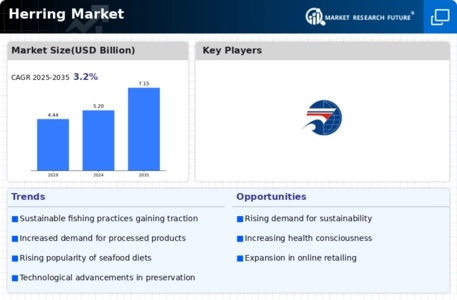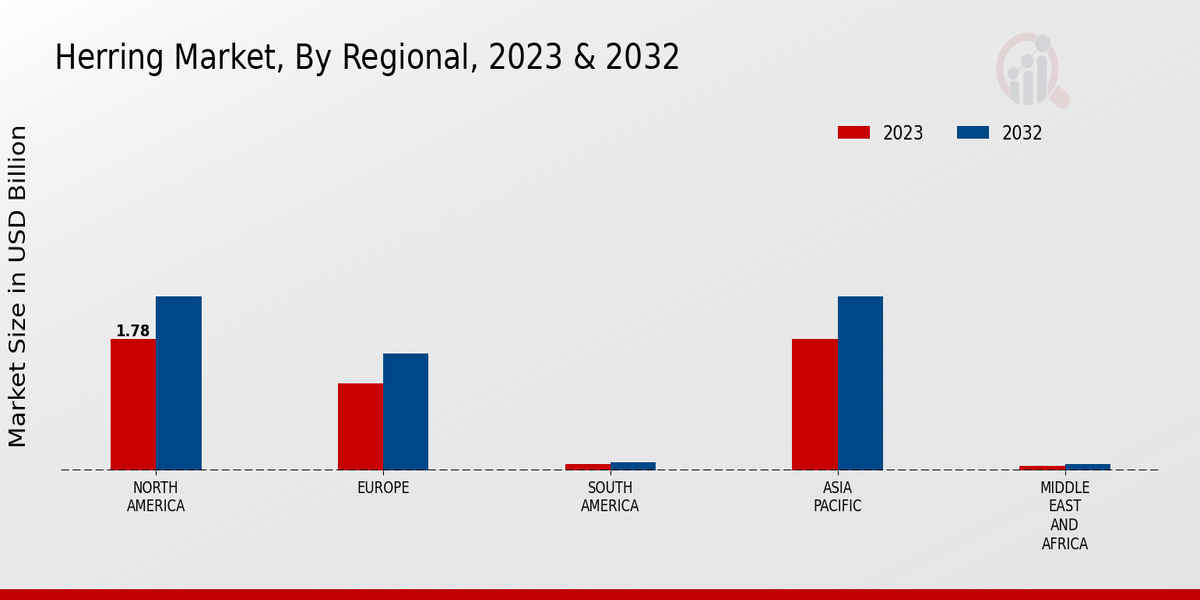Market Growth Projections
The Global Herring Market Industry is projected to experience steady growth over the coming years. With a market value of 5.2 USD Billion anticipated in 2024, the industry is expected to expand further, reaching approximately 7.15 USD Billion by 2035. This growth is underpinned by a compound annual growth rate of 2.94% from 2025 to 2035. Various factors, including rising consumer awareness of health benefits, sustainability trends, and increased aquaculture practices, contribute to this positive outlook. The Global Herring Market Industry appears well-positioned to capitalize on these trends, potentially leading to a robust market presence in the seafood sector.
Growing Export Opportunities
The Global Herring Market Industry is experiencing growth due to expanding export opportunities. Countries with abundant herring stocks are increasingly looking to international markets to boost their economies. For instance, nations in Northern Europe are capitalizing on their herring fisheries to export to regions with high demand, such as Asia and North America. This trend is likely to enhance the market's overall value, with projections indicating a growth trajectory towards 7.15 USD Billion by 2035. As global trade policies evolve and markets open up, the Global Herring Market Industry stands to benefit from these expanding export avenues.
Culinary Versatility of Herring
The culinary versatility of herring serves as a significant driver for the Global Herring Market Industry. Herring can be prepared in various ways, including pickling, smoking, and grilling, appealing to diverse culinary traditions across the globe. This adaptability allows herring to be incorporated into numerous dishes, enhancing its marketability. As global cuisine continues to evolve, the demand for herring in both traditional and contemporary recipes is likely to rise. This trend may contribute to the market's growth, as consumers seek new and exciting ways to enjoy herring, thereby solidifying its position within the Global Herring Market Industry.
Expansion of Aquaculture Practices
The Global Herring Market Industry is positively influenced by the expansion of aquaculture practices. As wild fish stocks face pressure from overfishing, aquaculture presents a viable solution to meet the growing global demand for seafood. Herring farming is gaining traction in various regions, providing a sustainable source of this fish. The aquaculture sector is expected to grow at a compound annual growth rate of 2.94% from 2025 to 2035, which may significantly impact the Global Herring Market Industry. This growth in aquaculture not only ensures a steady supply of herring but also supports the industry's sustainability goals.
Rising Demand for Sustainable Seafood
The Global Herring Market Industry experiences a notable increase in demand for sustainable seafood options. Consumers are becoming increasingly aware of the environmental impacts of overfishing and are seeking alternatives that promote sustainability. Herring, being a relatively abundant species, aligns well with these consumer preferences. This shift is expected to contribute to the market's growth, with projections indicating a market value of 5.2 USD Billion in 2024. As sustainability becomes a key purchasing criterion, the Global Herring Market Industry is likely to benefit from this trend, potentially enhancing its market share in the broader seafood sector.
Health Benefits of Herring Consumption
The Global Herring Market Industry is bolstered by the growing recognition of the health benefits associated with herring consumption. Rich in omega-3 fatty acids, vitamins, and minerals, herring is increasingly promoted as a healthy dietary choice. Public health campaigns and nutrition guidelines are likely to emphasize the importance of including fish in diets, particularly fatty fish like herring. This trend may lead to increased consumption rates, further driving market growth. As awareness of these health benefits spreads, the Global Herring Market Industry could see a significant uptick in demand, contributing to its projected growth to 7.15 USD Billion by 2035.













Leave a Comment